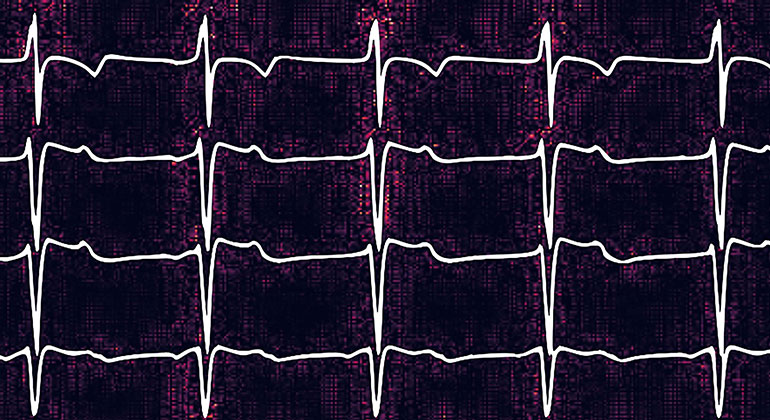Mount Sinai Cardiologist Helps Create Best Practices for Managing Heart Attack Patients Without Significant Signs of Attack
New algorithm aims to establish more streamlined and individualized patient care
For the first time in the United States, doctors with the American Heart Association have outlined best practices for cardiologists to evaluate and manage patients who have heart attacks with no significant signs of coronary artery disease—a condition known as myocardial infarction with non-obstructive coronary arteries, or MINOCA. The new document, published in the March 27 issue of Circulation, aims to help physicians better recognize patients with this condition, to avoid common misdiagnoses and streamline care. It is especially important for women, who represent a disproportionate number of MINOCA cases.
Jacqueline Tamis-Holland, MD, Associate Professor of Medicine at the Icahn School of Medicine at Mount Sinai, and Associate Director of the Mount Sinai St. Luke’s Cardiac Catheterization Lab, led a team of cardiologists from across the world with expertise in caring for patients with MINOCA, to publish this consensus document identifying the best practices.
Until now, the management of patients with suspected MINOCA has varied. There is no clear consensus in clinical practice on addressing and managing these cases, leading to inadequate treatment and potentially putting patients at risk of reoccurrence.
“It is not uncommon for clinicians to misinform their patients regarding their chest pain syndrome;” Dr Tamis-Holland explains. “Unfortunately some patients who have chest pain and elevated heart enzymes, but do not have severe narrowing of their arteries are told that they did not have a heart attack, and this is often an incorrect diagnosis. As a result, doctors often send these patients home without protective medications and don’t tell them about preventive measures.”
The team of cardiologists created an algorithm to develop this new standard of care. Steps are as follows:
1. First, review the clinical presentation and ensure that the patient did indeed have evidence of a heart attack. This generally requires symptoms and/or changes as well as an elevation in the enzymes. An elevation in the heart enzymes alone without symptoms or electrocardiogram (ECG) changes is usually not considered aheart attack.
2. Exclude conditions that might mimic a heart attack.
3. If the findings indeed support a heart attack and not another diagnosis, then consider the various causes. This may require additional testing or investigations.
4. Once the evaluation is complete, ensure that patients receive proper education regarding their condition and provide appropriate therapies to treat the underlying cause of the heart attack.
“This document is a reminder to all physicians that the absence of obstructive coronary artery disease does not exclude the diagnosis of a heart attack. In these cases doctors must consider additional evaluations,” adds Dr. Tamis-Holland. “We hope this document will provide useful information to clinicians caring for patients with MINOCA, leading to standardized care across the United States, and ultimately pave the way for research focused on etiologic based treatment and prognosis for patients with MINOCA.”
About the Mount Sinai Health System
Mount Sinai Health System is one of the largest academic medical systems in the New York metro area, with 48,000 employees working across seven hospitals, more than 400 outpatient practices, more than 600 research and clinical labs, a school of nursing, and a leading school of medicine and graduate education. Mount Sinai advances health for all people, everywhere, by taking on the most complex health care challenges of our time—discovering and applying new scientific learning and knowledge; developing safer, more effective treatments; educating the next generation of medical leaders and innovators; and supporting local communities by delivering high-quality care to all who need it.
Through the integration of its hospitals, labs, and schools, Mount Sinai offers comprehensive health care solutions from birth through geriatrics, leveraging innovative approaches such as artificial intelligence and informatics while keeping patients’ medical and emotional needs at the center of all treatment. The Health System includes approximately 9,000 primary and specialty care physicians and 10 free-standing joint-venture centers throughout the five boroughs of New York City, Westchester, Long Island, and Florida. Hospitals within the System are consistently ranked by Newsweek’s® “The World’s Best Smart Hospitals, Best in State Hospitals, World Best Hospitals and Best Specialty Hospitals” and by U.S. News & World Report's® “Best Hospitals” and “Best Children’s Hospitals.” The Mount Sinai Hospital is on the U.S. News & World Report® “Best Hospitals” Honor Roll for 2025-2026.
For more information, visit https://www.mountsinai.org or find Mount Sinai on Facebook, Instagram, LinkedIn, X, and YouTube.

Scientists Show How AI May Spot Unseen Signs of Heart Failure
Oct 14, 2021 View All Press Releases